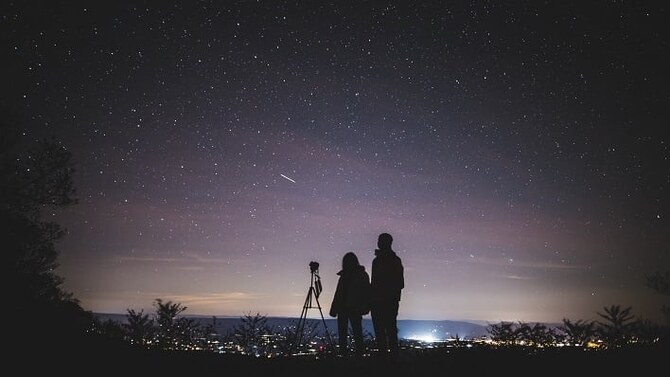RIYADH: Arabs are on the lookout for Suhail, a star whose sighting is said to herald in cooler weather, as temperatures hit 50 degrees Celsius amid this summer’s searing heat.
Historically, the star signaled the onset of cooler days in the desert. According to Arab folklore, the night “cools down” when “Suhail rises.”
Abouazza Elmhamdi, in the Physics and Astronomy department at King Saud University, told Arab News: “Suhail is one of the most important stars for the people of the Arabian Peninsula. Throughout history, it has attracted the interest of astronomers, as well as the region’s residents and farmers. It is associated with a noticeable drop in temperatures after a long period of searing heat. It is also associated with the season of some local crops in the region (such as palm trees).”
Listed in the International Astronomical Union catalog of star names under the Latin name Canopus, Suhail is located around 310 lightyears from the sun. Its luminosity is over 10,000 times that of the sun, while its mass is around eight times greater. It appears to be the brightest star in the southern constellation of Carina and the second-brightest star in the night sky after the famous Sirius star, Elmhamdi explained.
“This year, Suhail will rise in the Arabian Peninsula around Aug. 24, although the exact time can vary slightly depending on a person’s location within the region,” he said.
Suhail can be spotted next to Sirius from the constellation Canis Major and can be observed with the naked eye in the southern half of the Arabian Peninsula. It becomes visible in Jazan on Aug. 7, the center of Saudi Arabia on Aug. 24, and the north of the Kingdom on Sept. 8.
The Suhail season lasts for 52 days. The weather becomes pleasant at night while remaining hot during the early part of the day.
By the end of the season, daytime temperatures become more comfortable.
The UAE’s Al-Sadeem Astronomy, an observatory based in the capital Abu Dhabi, posted on X that the Suhail star was a reliable navigation tool for early Arabs, especially sailors and travelers.
In Emirati culture, the appearance of Suhail symbolized abundance, which is why many fishermen, pearl hunters and farmers based their activities on its presence.
One of the signs coinciding with Suhail’s emergence is the decline in the angle of the sun’s rays. The days get gradually shorter and cool down significantly toward the end of the night.
With the effects of climate change, the drop in temperature may not be as immediately perceptible as in the past, but the weather will become more bearable, especially around October when the rainy season starts and temperatures settle around 30 C.



























